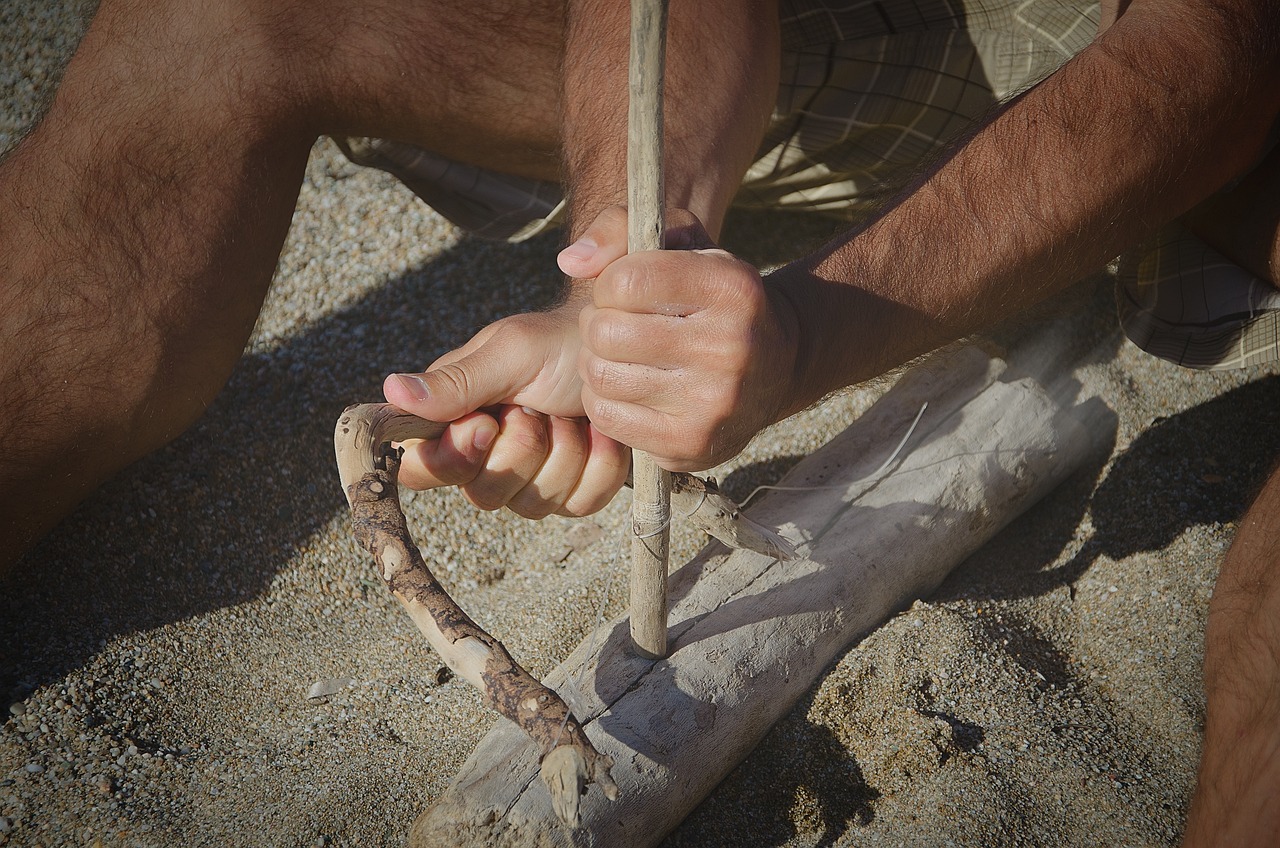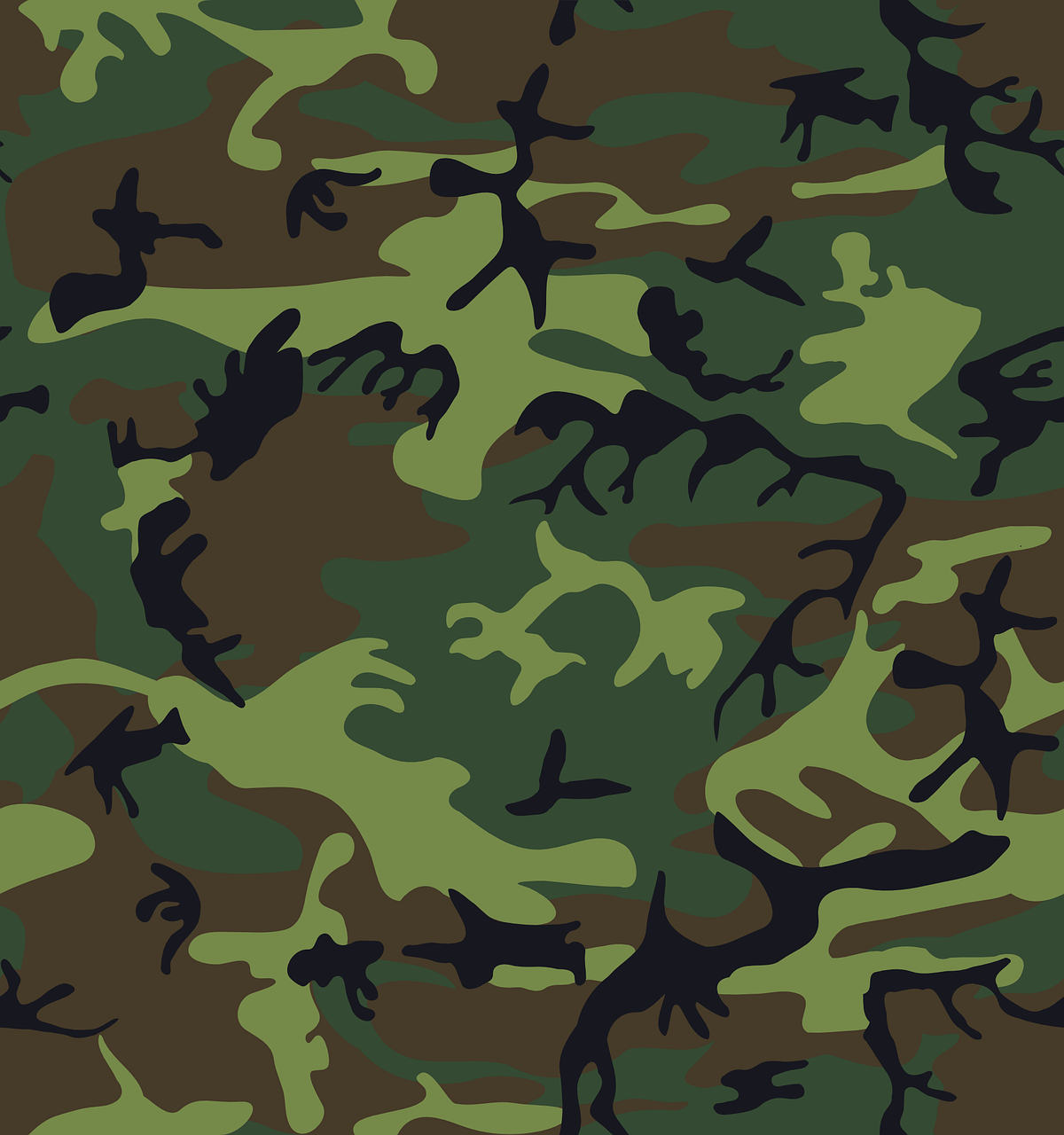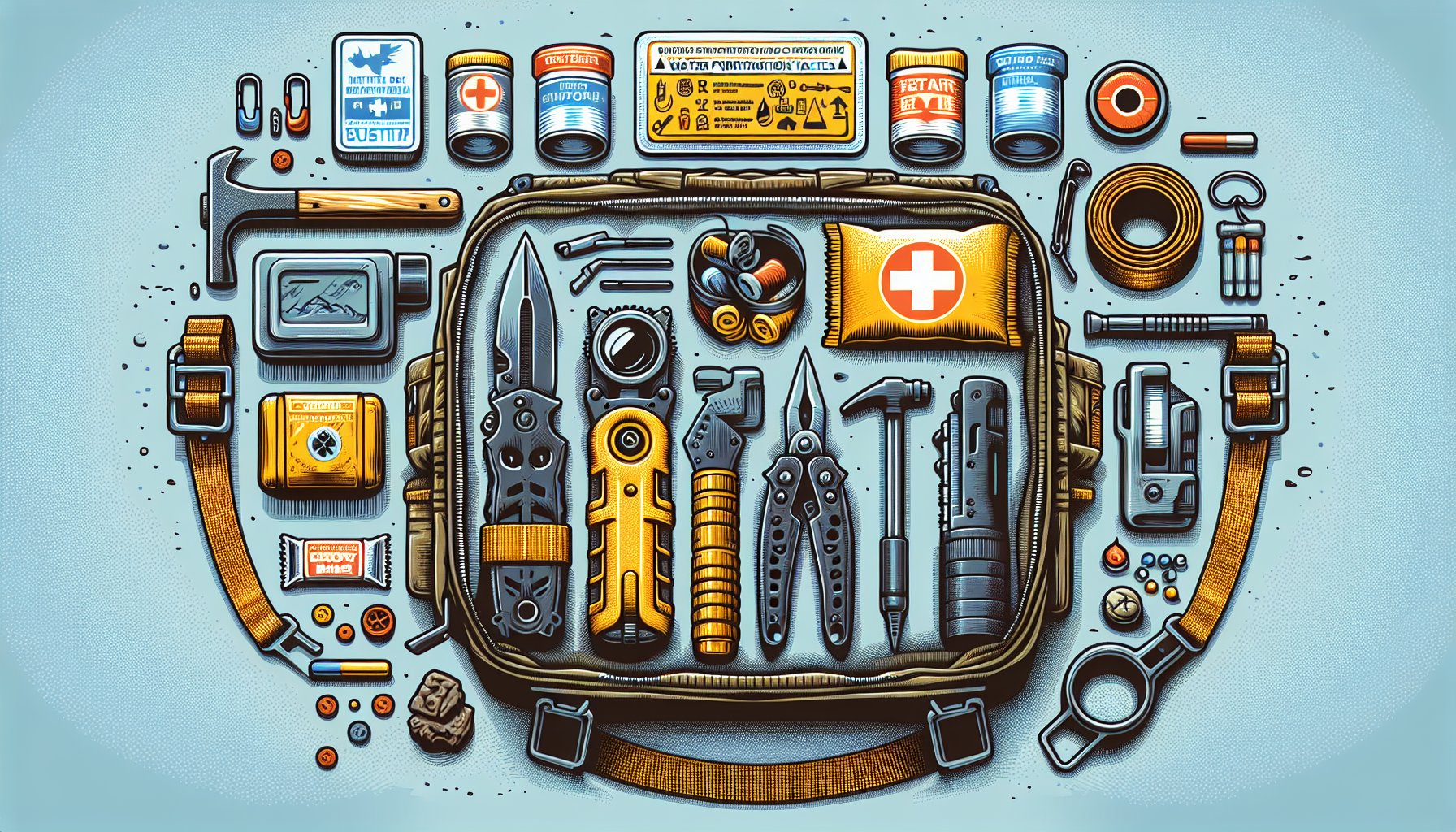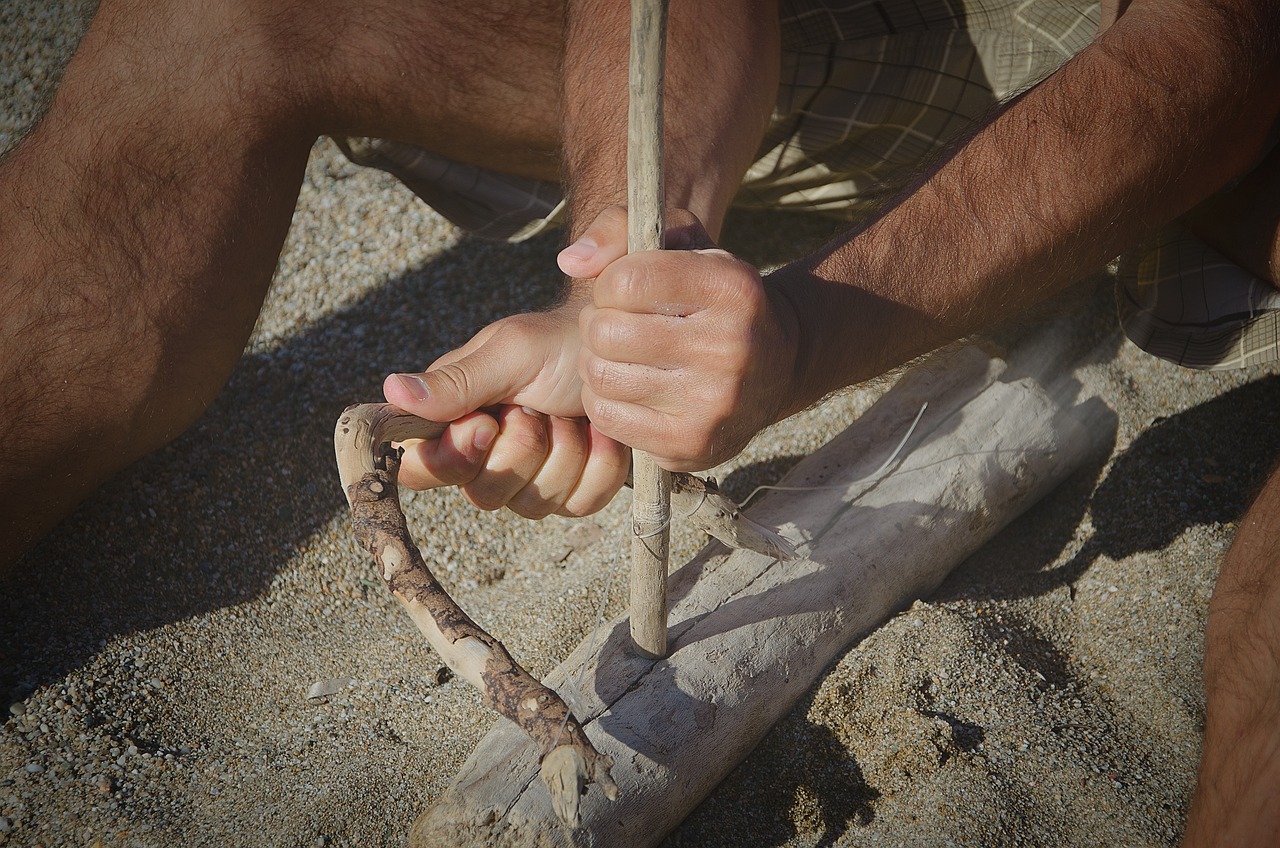Imagine finding yourself in a situation where you need to evacuate your home quickly, whether it’s due to a natural disaster or an unforeseen emergency. The key to surviving such scenarios lies in having a bug-out bag ready and packed with the essential items you’ll need to sustain yourself. But what exactly should be in your bug-out bag? In this article, we will explore the crucial items that can make all the difference in ensuring your safety and well-being in times of crisis.
Shelter
Tent
A tent is a crucial item to have in your bug-out bag. It provides a safe and comfortable shelter, protecting you from the elements and giving you a place to rest and sleep. When choosing a tent, make sure it is lightweight and easy to set up. Look for a tent that is durable and waterproof to ensure it will withstand adverse weather conditions.
Sleeping bag
A good sleeping bag is essential to keep you warm and comfortable during those long nights in the wilderness. Opt for a sleeping bag that is lightweight and compact, making it easy to carry in your bug-out bag. Look for one that is suitable for the expected temperature range of the area you will be traveling in. Choose a sleeping bag made from high-quality materials that will provide insulation and retain heat.
Emergency blanket
An emergency blanket is a versatile item that should always be included in your bug-out bag. These compact, lightweight blankets are designed to reflect your body heat back to you, providing warmth and preventing hypothermia in emergency situations. Made of durable and waterproof materials, they can also be used as a makeshift shelter or ground cover.
Tarp or poncho
A tarp or poncho is a multipurpose item that can be used for various purposes. It can serve as an additional layer of waterproofing for your shelter, protecting you and your gear from rain or snow. A tarp can also be used as a ground cover to keep you dry and create a clean surface. Ponchos, on the other hand, can be worn to keep you dry during rainfall or can even be rigged up as an improvised shelter in emergencies.
Water
Water bottles
Water is essential for survival, and having an adequate supply is crucial in any emergency situation. Carry several lightweight water bottles in your bug-out bag to store and transport water. Look for bottles that are durable and leak-proof. Consider using ones with large openings for easy refilling and cleaning.
Water purification tablets
In an emergency situation, you may not always have access to clean drinking water. Water purification tablets are an effective and compact solution. These tablets are designed to kill bacteria, viruses, and parasites, making contaminated water safe to drink. Ensure you have enough tablets to purify the water you may encounter during your journey.
Water filter
A water filter is another option to ensure you have access to safe drinking water. It removes impurities and contaminants from water sources, including bacteria and protozoa. Look for a portable and lightweight water filter that is easy to use and clean. Consider one with replaceable filter cartridges for extended use.
Water storage bags
Having additional water storage options in your bug-out bag is a wise choice. Water storage bags are collapsible and lightweight, making them easy to carry and store. They allow you to collect and store larger volumes of water when necessary. Look for bags made of durable materials that can withstand rugged conditions.

Food
Non-perishable food
When packing food for your bug-out bag, opt for non-perishable items that have a long shelf life. These foods are specifically designed to remain edible for extended periods without refrigeration. Examples include canned goods, dried fruits, nuts, and granola bars. Make sure to rotate these items periodically to maintain freshness.
Meal bars
Meal bars are a convenient and compact source of nutrition that can sustain you during emergencies. Look for meal bars that are high in calories and provide a balanced mix of carbohydrates, proteins, and fats. Choose bars that do not require refrigeration and are individually wrapped for easy portioning and longer shelf life.
Canned goods
Canned goods are an excellent addition to your bug-out bag due to their long shelf life and nutritional value. Look for canned meats, vegetables, and fruits that provide essential nutrients. Ensure that you have a manual can opener included in your kit for access to the contents of the cans.
Dried fruits and nuts
Dried fruits and nuts are lightweight, high in energy, and packed with essential nutrients. They are an excellent option for on-the-go snacking and can be easily portioned for meals. Look for a variety of dried fruits and nuts to provide a range of flavors and nutrients.
Fire
Lighter or matches
Having a reliable fire-starting tool is essential for survival situations. Carry a waterproof lighter or matches in your bug-out bag. Make sure to keep them dry and stored in a waterproof container to ensure they are functional when needed.
Firestarter cubes
Firestarter cubes are compact, lightweight, and easy to use. They are specifically designed to ignite quickly and provide a sustained flame, making it easier to light a fire in adverse conditions. These cubes are made from a combination of wax and other combustible materials that burn long enough to ignite your firewood.
Firesteel or flint
Firesteel or flint is an alternative fire-starting method that doesn’t rely on fuel or matches. With practice, you can create sparks by striking the steel against a hard surface, igniting your tinder. This method is useful in situations where traditional fire-starting tools may be unavailable or depleted.
Cotton balls or tinder
Having suitable tinder is crucial for starting a fire. Carry cotton balls soaked in petroleum jelly or other flammable material as an effective fire starter. These can be easily ignited with a spark, providing a sustained flame that can be used to light larger pieces of kindling and firewood.

First Aid
First aid kit
A well-stocked first aid kit is an essential item in any bug-out bag. It should contain a variety of medical supplies, including bandages, antiseptics, adhesive tape, and wound dressings. Make sure to include items specific to your needs, such as prescription medications and personal medical supplies.
Bandages and gauze
Bandages and gauze are essential for treating minor cuts, scrapes, and wounds. Include a variety of bandage sizes and shapes, as well as sterile gauze pads for effective wound care. Ensure you have adhesive tape to secure dressings in place.
Antibacterial ointment
Antibacterial ointment helps prevent infection in minor cuts and wounds. Include a small tube or packet of antibacterial ointment in your first aid kit for immediate treatment. Look for a product that is safe for all skin types and has a long shelf life.
Pain relievers
Pain relievers can come in handy during emergencies when discomfort or pain arises. Include a small supply of over-the-counter pain medication such as ibuprofen or acetaminophen in your first aid kit. Ensure you follow proper dosage guidelines and check expiration dates regularly.
Tools
Multi-tool
A multi-tool is a versatile item that combines several useful tools into one compact device. It typically includes pliers, knives, screwdrivers, and other tools that can be invaluable in emergency situations. Look for a multi-tool made from durable materials and consider additional features such as a saw or a wire cutter.
Knife
A reliable knife is an essential item in any bug-out bag. It can be used for various purposes, including cutting through materials, preparing food, and self-defense. Choose a sturdy, fixed-blade knife or a folding knife with a locking mechanism to ensure safety and functionality.
Shovel
A compact folding shovel can be a valuable tool in survival situations. It can be used for digging fire pits, creating shelter, or clearing debris. Look for a shovel made from durable materials, such as carbon steel, and consider one with multiple functions, such as a built-in saw or a pickaxe.
Duct tape
Duct tape is an incredibly versatile tool that should not be underestimated. It can be used for emergency repairs, securing items, creating makeshift shelters, and even medical purposes. Carry a small roll of duct tape in your bug-out bag for its myriad of potential uses.

Communication
Whistle
A whistle is a lightweight and compact tool that can be used to signal for help or alert others to your presence. It is louder and more sustained than shouting, making it an effective means of communication in emergency situations. Choose a whistle made from durable materials that can withstand harsh conditions.
Signal mirror
A signal mirror is a small mirror that can reflect sunlight to catch the attention of potential rescuers or passersby. It is lightweight and compact, making it easy to carry in your bug-out bag. Look for a mirror with a sighting hole or a built-in targeting system for improved accuracy.
Walkie-talkies
Walkie-talkies are excellent communication devices for staying in contact with your group during emergencies. Choose models with a long range, clear sound quality, and durable construction. Consider rechargeable batteries or bring extras to ensure continuous communication.
Battery-powered radio
A battery-powered radio is an essential tool for staying informed during emergencies. It allows you to receive vital updates and weather forecasts, helping you make informed decisions. Look for a compact and lightweight radio that is easy to carry and has a long battery life or the option for hand-crank charging.
Navigation
Compass
A compass is a fundamental tool for navigation and orientation. It allows you to determine your direction and assists in following a map or finding your way in unfamiliar terrain. Choose a reliable compass with clear markings and a sturdy construction.
Map
Having a map of the area you will be traveling through is crucial for navigation. Choose a topographic map that provides detailed information about the terrain, including elevation, water sources, and landmarks. Ensure the map is waterproof or keep it in a protective case.
GPS device
A GPS (Global Positioning System) device can be a valuable tool for precise navigation. It uses satellite signals to determine your location, providing real-time coordinates and mapping information. Consider a handheld GPS device with a long battery life and preloaded maps.
Survival guide
A comprehensive survival guide can provide valuable information on various topics, including shelter construction, navigation techniques, and edible plant identification. Choose a survival guide that covers the specific region you will be traveling in and contains practical tips and advice.

Clothing
Extra clothes
Having extra clothing in your bug-out bag is essential for staying dry, warm, and protected from the elements. Pack lightweight, moisture-wicking clothing that can be layered for optimal insulation. Include extra socks, underwear, and a change of clothes suitable for the expected weather conditions.
Rain gear
Rain gear is essential for staying dry during wet weather. Pack a lightweight and waterproof jacket and pants that can be easily stored in your bug-out bag. Look for breathable materials that will prevent you from overheating and provide optimal protection.
Sturdy shoes
Sturdy and comfortable footwear is crucial for any emergency situation. Choose hiking boots or durable athletic shoes that provide ankle support and have a rugged sole for grip. Ensure your shoes are broken-in and fit properly to prevent discomfort and blisters.
Hat and gloves
Protecting your head and hands from the elements is vital. Pack a hat that provides shade from the sun and insulation from the cold. Lightweight gloves will keep your hands warm and provide protection when handling rough materials or navigating through dense vegetation.
Hygiene
Toilet paper
Toilet paper is a necessity for maintaining hygiene and cleanliness. Pack a small roll or individual packets of toilet paper in your bug-out bag. Consider storing it in a waterproof container or sealable bag to prevent moisture damage.
Hand sanitizer
Hand sanitizer is a convenient and effective way to keep your hands clean when soap and water are not readily available. Carry a travel-sized bottle of hand sanitizer in your bug-out bag and use it regularly to prevent the spread of germs.
Wet wipes
Wet wipes are incredibly versatile and can be used for personal hygiene, cleaning surfaces, or refreshing yourself in the absence of showers. Pack a small pack of biodegradable wet wipes in your bug-out bag for quick and convenient cleaning.
Toothbrush and toothpaste
Maintaining oral hygiene is important even in emergency situations. Pack a compact toothbrush and a travel-sized tube of toothpaste in your bug-out bag. Look for travel-friendly options that are lightweight and easily replaceable.
In conclusion, a well-prepared bug-out bag should include essential items from various categories to ensure your safety, comfort, and survival during emergency situations. Consider the specific needs of your environment and the duration of your journey when selecting the items for your bug-out bag. Regularly review and update your bag to ensure that all items are in good condition and meet your current needs. Remember, proper planning and preparation are key to facing any unexpected emergency with confidence. Stay safe, stay prepared.

